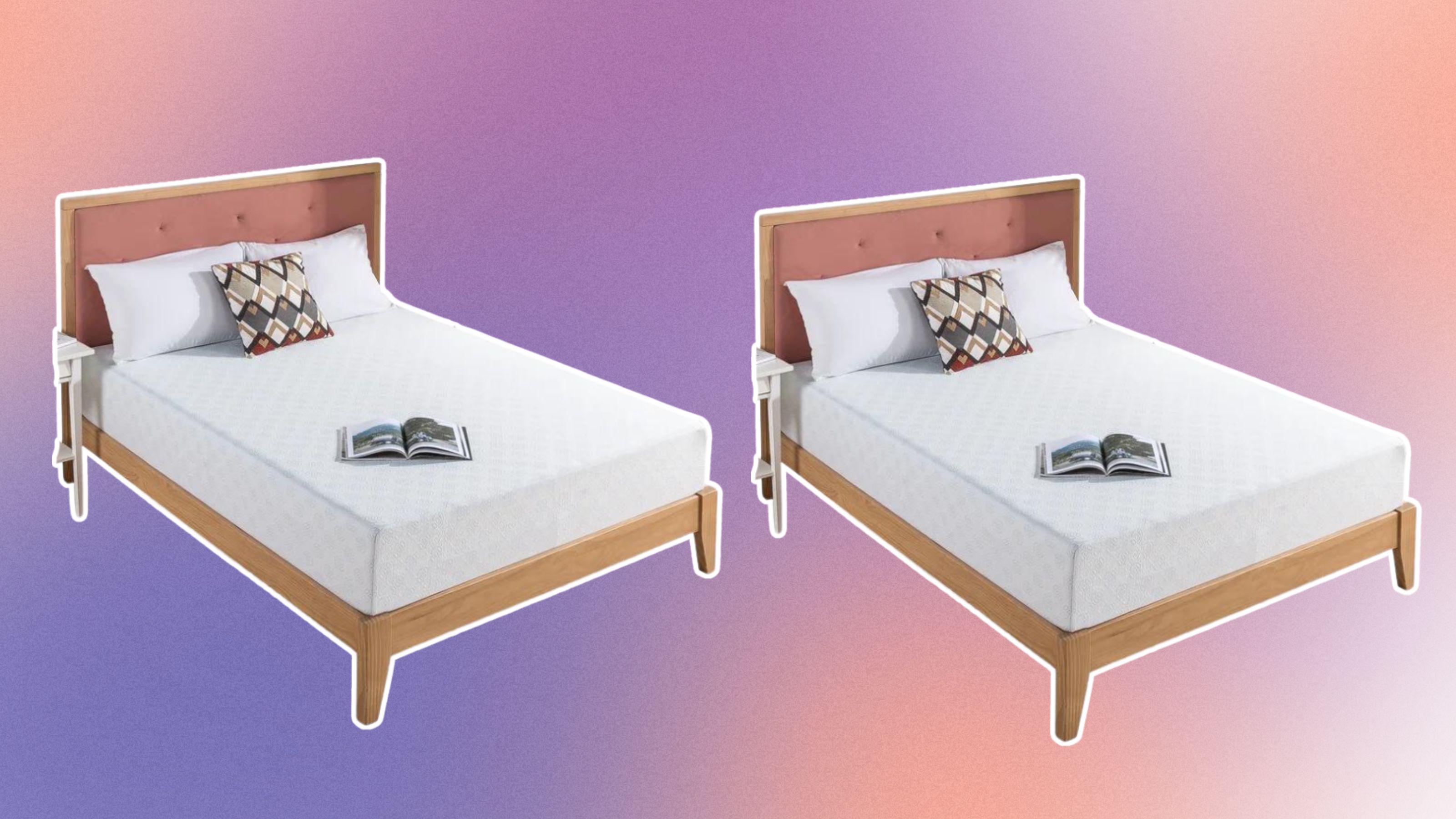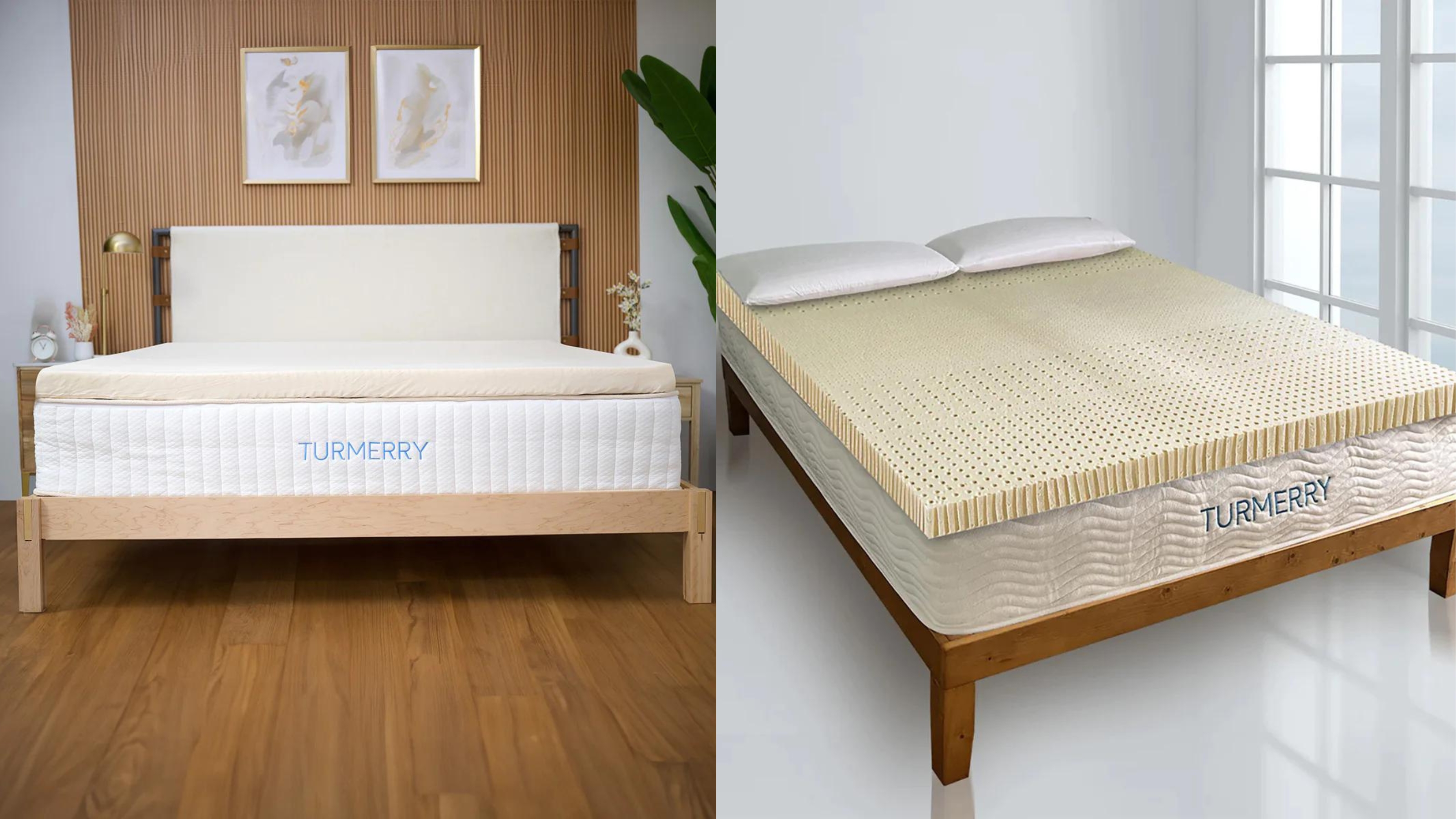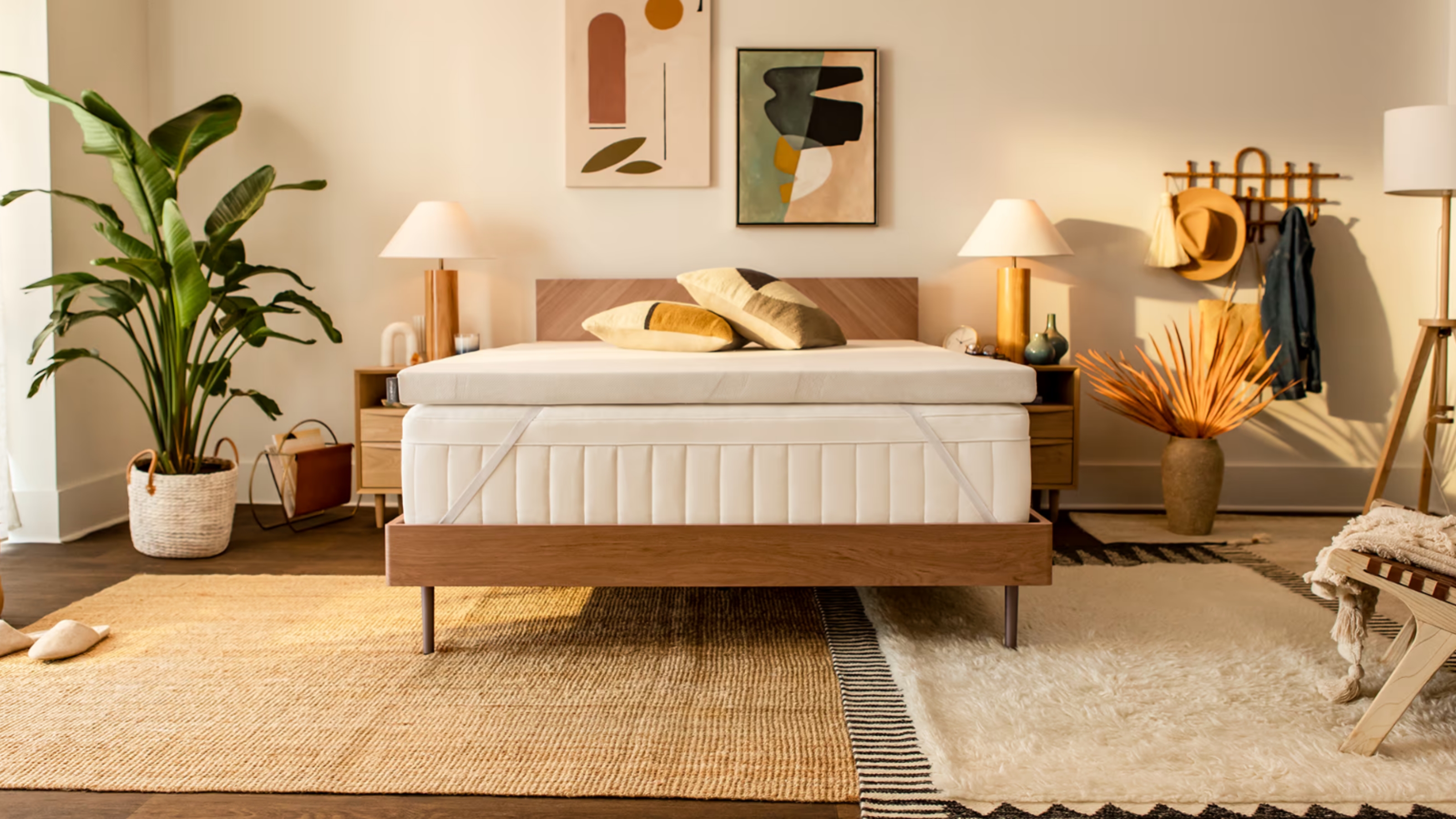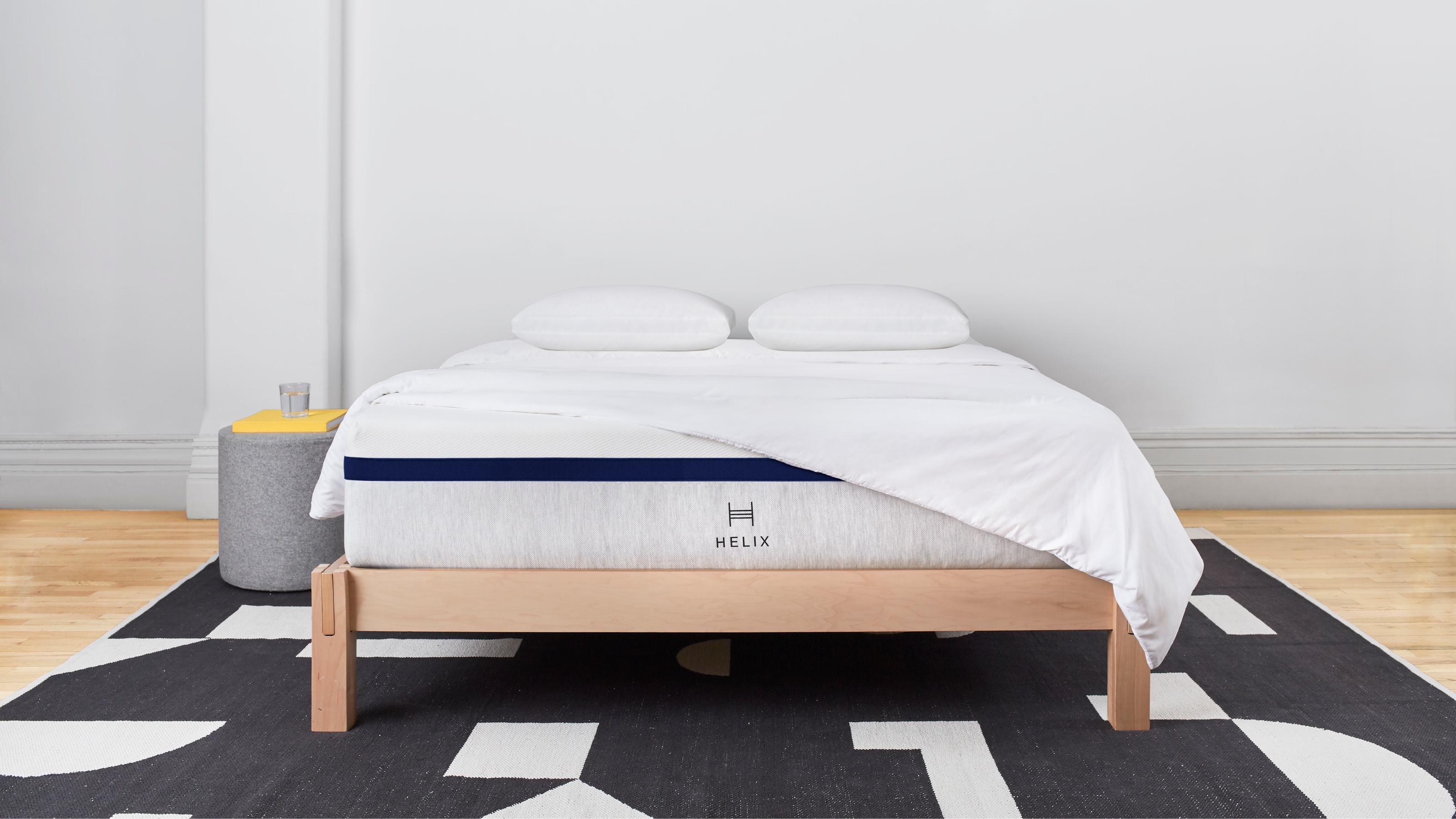

There are many reasons why you might want to know how to recycle a mattress. If you're waking up with random aches and pains (that aren't medically related or have anything to do with age), your bed might be the culprit.
While the best mattress might be an investment buy, you should really be changing yours well before its 10th birthday... and much earlier if you're seeing physical signs of wear and tear. After all, a good night's sleep is crucial for starting your day well, improving your mood, and reducing your stress levels.
But, there is a process when it comes to replacing your old mattress. You can't just leave it by the curbside in the hope that your garbage disposal or a thrifty passer-by will pick it up. So we spoke to the experts on recycling a mattress to get the lowdown on how to go about it and the benefits of having it sent to a specialist center, and, what components can be salvaged from it.
How to recycle a mattress
'There are a number of different ways to get rid of a used mattress, from recycling to donation to throwing it away,' says Austin Meadows, sleep product tester, Sleep Foundation.
'The method that’s right for you depends on a number of different factors, especially the state of the mattress, where you are located, and which facilities are close by offering which types of disposal and donation services.'
Why should you recycle a mattress?
'Mattresses are one of those common household items that can be a huge headache when recycling. Many thrift and secondhand stores don’t want them, and it can be tough to track down a recycling program that accepts them,' says Mary Mazzoni, author at Earth 911.
'That said, sending your used mattress to the landfill can come with a hefty impact on the planet. Amazingly, a double mattress can take up as much as 60 cubic feet in a landfill – making it that much more important to recycle your old one.'
What is mattress recycling?
'Most material in a mattress can be reused once the bed is deconstructed,' says Efrat Partouche, EVP, customer success and sales, Nectar Sleep.
'Many manufacturing companies are finding new ways to use old bedding materials. Some portion of a discarded mattress could be reused. You could make a new pillow out of a mattress or a small cushion bed for your pooch. This concept is different from refurbishing or renovating a mattress.'
Can you recycle a mattress?
'Yes. You can easily recycle a mattress, and it is time to try it,' says Partouche.
'Around 16 million mattresses are discarded every year. The textile industry is one of the biggest sources of pollution globally, and landfills are quickly filling up with these discarded textiles. An average mattress takes up about 40 cubic feet of space.'
According to Amanda Wall, director of marketing, Mattress recycling council, roughly 75% of most mattress parts or components can be recycled and more than 50,000 mattresses are discarded in the U.S every single day.
How do I know when to get a new mattress?
Before making the decision to recycle a mattress, you might be a bit reluctant to get rid of it. After all, the best mattresses can be a big investment for some, and you may have found your current bed comfy. However, sleeping on an old mattress could have long-term effects on your health.
Nadine Farrelly, senior content specialist at 1-800-GOT-JUNK, highlights eight reasons to get rid of your current one:
- The mattress is over 8 years old.
- It creaks or squeaks when you move on it.
- It rolls you toward the center when you lie down.
- Your back hurts when you get up in the morning.
- You don’t feel like you get a restful sleep each night.
- The mattress noticeably sags in the middle.
- You often wake up feeling congested due to dust allergies.
'A mattress isn’t a Merlot - it won’t get better the longer you keep hold of it. Over the years it will begin to sag, and this spells disaster for your sleep,' says Emma Reid, head of sustainability at Simba Sleep.
'Without the right support you may have trouble drifting off, and your mattress could cause pain in your back and neck. This won’t just cause you problems at night, either, as you’ll most likely wake up feeling sore, stiff, and still very tired. If you’ve had your mattress for a few years and you’ve noticed it just doesn’t do the trick anymore, it’s probably time for it to retire.'
Where can I recycle a mattress?
'Mattresses can’t simply be left out for pickup with your regular recycling. You’ll often need to find a facility that specializes in mattress recycling, and you’ll need to transport it there on your own.' says Farrelly.
To make things easier, the Mattress Recycling Council has a directory of recyclers across the country, so you can find your nearest quickly and easily.
What can mattress materials be recycled into?
You'll be surprised to know that mattresses can be recycled into a load of household products you'll see in your home today. Here, Wall shares what the materials can be transformed into:
- Foam padding - if you've ever had to install carpet, chances are - you've used
underlayment made from a recycled bed. It's also used in the best pet beds too. - Steel springs - recycled as scrap metal and also reused in household appliances and building materials.
- Wooden frames - even your best bed frame can be turned into landscaping mulch or burned as an alternative fuel source.
- Fabric/Fibers - used in industrial oil filters and other textile applications.
'During the recycling process, mattresses are broken down and assessed for reusable parts,' says Lucy, resident sleep expert, MattressNextDay.
'How much of your mattress will be recycled depends on the type and quality of the mattress at the time of recycling. During the dismantling process, each mattress component is separated into large bales. These bales are then sent to the relevant recycling destinations to get ready to be re-used. Some mattress materials are unable to be recycled.'
'Occasionally, the covers and fillings can't be re-used. These parts will be disposed of in refuse sites. Mattresses made using natural materials like latex and wool tend to be best for complete recycling. However, all mattresses have parts that are able to be re-used so it's always beneficial to opt for recycling rather than sending the mattress to landfill.'
What happens when a mattress is recycled?
Want to know the ins and outs of mattress recycling? Lucky for you, Wall is quite transparent in how the recycling facilities the Mattress Recyling Council works with go about the process. After all, they've recycled over 10,000,000 mattresses in California, Connecticut, and Rhode Island.
The step-by-step process of recycling a mattress
- Mattresses are cut open and the layers are separated
- Interior materials are organized by type
- Foam, fiber, and other soft commodities are compressed
- Metal and box springs are extracted and sent to scrap recyclers
- Metal and box springs are then sold to steel mills and foundries
- Wood is recycled and used as a fuel source
Why should you recycle your mattress?
It's important to be a considerate and law-abiding citizen when you decide to dispose of your mattress. While dumping your old bed furniture might seem like the fastest option, it can have negative consequences for your neighborhood and your finances and receive a mark on your criminal record.
When someone dumps their old mattress on any property that is not in a permitted waste removal facility, your community sees the effects.
Illegal dumping disrupts natural land and water, harms plants and wildlife, causes health and safety hazards, attracts disease-carrying pests like rodents and insects, pollutes water sources, decreases property values, and costs taxpayers millions in clean-up costs. If convicted of this crime, you can receive fines up to $10,000, have your vehicle seized, and even be incarcerated.
Legislation aside, there are loads of other reasons to go the extra mile and recycle a mattress. However, our three favorites are:
- New product development: conservation of resources by using old steel, foam, wood and other materials.
- Less reliance on landfills: you can actively help divert mattresses from the waste stream.
- Improve the economy: Help create recycling jobs in your community.
How to stop illegal dumping of mattresses
It's important that we all take accountability when recycling a mattress. Because let's face it: we should all aim to be as environmentally friendly as possible to leave Earth in optimal condition for our kids and future generations.
You can do this by doing your due diligence at the point of purchase right until reaching out to someone to collect sort your garbage out. Wall shares ways that you can recycle with a clear conscience, as Wall outlines:
- Choose junk haulers wisely: When you work with a junk hauler to remove unwanted items, ask for a receipt and make sure they are disposing of your items legally.
- Report illegal dumping: If you witness illegal dumping in progress, write down the license plate and vehicle information and immediately call your local authorities to file a report. In some cases, there may even be a reward!
- Volunteer in local clean-ups: Reach out to local environmental or civic groups that host community clean-up events. And, check out the Bye Bye Mattress Facebook page for mattress collection events in your area.
How to recycle your mattress responsibly
- Ask the retailer you bought it from: If you’re about to purchase a mattress and have it delivered, ask your retailer about taking your old one. In California, for example, it’s required by law that retailers offer to take your old one back for free. The Mattress Recycling Council’s program works with many retailers to recycle old mattresses they collect from their customers.
- Ask your residential waste collector about curbside pick-up: Every state's recycling policies will differ, but many may have no-cost bulky item curbside pick-up as part of their residential solid waste service. Contact your provider directly for details.
Can I donate, instead of recycling a mattress?
'Absolutely! As long as your mattress is in good condition, it can be donated,' says Farrelly.
'This means your mattress should be free from stains, rips, or tears, and not be broken in any way. Each local charitable organization that accepts mattress donations will have slightly different standards for what they take, so it’s best to check with them before you drop it off.'
Aside from giving away to a charitable organization, you can also give your mattress away via other local means, which is one way to contribute to your community via classified advertisement sites such as Gumtree.
'If you can’t find an organization or charity to donate your mattress to, there’s always the option of giving it away to someone directly. You can start by posting from your accounts on social media platforms and asking around to friends, family, and acquaintances in your network,' says Austin Meadows, sleep product tester, Sleep Foundation.
'People you may not have even thought of might be in need of a bed, or have use or space for a spare one. You can also use localized social media platforms like Facebook Marketplace, NextDoor, and Freecycle, as well as any ListServe mailing lists you may be on, to advertise your mattress.'
'Make sure to specify that it is totally free, and also to be clear about exactly what size it is, and what state it is in (so that you don’t wind up wasting both your time and the prospective new mattress owners’ time if it’s not the right fit.) Provide dimensions and pictures, if possible.'
How much does it cost to recycle a mattress?
In California, Connecticut and Rhode Island where the Mattress Recycling Council’s Bye Bye Mattress program is operational, mattress recycling is free. A fee collected on mattress and box springs sales in these states makes the statewide recycling program possible.
What to do with an old mattress
'There are many ways to sustainably dispose of old mattresses, from simply using it in another room, having it re-sold, recycled, or donating to charity,' says Jessica Foster, sustainability & ESG manager, Bensons for Beds, the UK's largest retailer.
'Recycling your mattress through a bed company is a great option and the mattresses within our scheme at Benson's are currently dismantled manually - meaning a much better recycling rate than if the process was automated.'
'Around 95% of the materials in Bensons' mattress recycling program are recycled, to become products in other sectors and the remaining 5% goes to energy from waste. For example, the foam can then be recycled into carpet underlay or insulation, while poly-fiber can be re-used as automotive felt.'
'A key part of our sustainability journey is to reduce the number of mattresses being sent to landfills each year in the UK: in 2019, it was estimated that ~70% of mattresses could end up in landfills. While we expect that figure to have reduced since - partly from increased retailers' efforts like ours - that’s still millions of mattresses per year ending up in landfills, a figure we aim to drastically reduce over years to come.'
While Angela Moran, ESG director at Silentnight says: 'Our mattresses are designed so that none should ever end up having to go to landfill. If your mattress no longer provides the comfort and support it once did, it’s a good idea to replace it,'
'However, instead of simply disposing of your mattress at the tip or in a skip, it’s worth taking the time to look for a reputable recycler, and the easiest way is to do that is to buy your new mattress through a retailer than offers a take-back scheme.'
'With this in mind, each product in the Silentnight Eco collection is designed to be fully recyclable, therefore reducing the amount of waste that goes to landfill. Each year, we work with partners in our supply chain who collect millions of recycled plastics that would otherwise end up in our oceans.'
'These are then ground into flakes, which are then washed, dried, melted and finely spun into high-performance polyester Eco Comfort Fibers, which are a key feature of each mattress in the Silentnight Eco collection.
“Our packaging, which is now 30% recycled content, can also be recycled, but once again it needs to go through a reputable recycler.'
Join our newsletter
Get small space home decor ideas, celeb inspiration, DIY tips and more, straight to your inbox!

Hi, I'm the former acting head ecommerce editor at Real Homes. Prior to working for the Future plc family, I've worked on a number of consumer events including the Ideal Home Show, Grand Designs Live, and Good Homes Magazine. With a first class degree from Keele University, and a plethora of experience in digital marketing, editorial, and social media, I have an eye for what should be in your shopping basket and have gone through the internal customer advisor accreditation process.
-
 Shoppers approve of this Wayfair cooling mattress on sale now for less than $270
Shoppers approve of this Wayfair cooling mattress on sale now for less than $270See the Wayfair cooling mattress with over 18k reviews and 4.6 stars for summer sleeping. Plus, more cooling sleep essentials on sale now
By Emily Lambe Published
-

 Turmerry Latex Mattress Topper review: a perforated pick for the perfect night's sleep
Turmerry Latex Mattress Topper review: a perforated pick for the perfect night's sleepContributing editor, Paige Cerulli tests the Turmerry Latex Mattress Topper in her midwestern home
By Paige Cerulli Published
-
 6 best cooling mattress toppers and pads to buy — from $89.99
6 best cooling mattress toppers and pads to buy — from $89.99Half a dozen of the best cooling mattress toppers and pads to buy if you are a hot sleeper, or live in a warm climate. Including Surbtex and Tempur Pedic options
By Christina Chrysostomou Last updated
-

 The TEMPUR-Adapt mattress topper is a dreamy combo of cushion and support
The TEMPUR-Adapt mattress topper is a dreamy combo of cushion and supportOur contributing editor reviews the TEMPUR-Adapt mattress topper for two weeks in her home
By Paige Cerulli Published
-
 What is the happiest color for a small bedroom? Here's what experts recommend for a dopamine boost
What is the happiest color for a small bedroom? Here's what experts recommend for a dopamine boostWhat is the happiest color for a small bedroom? Paint experts from Benjamin Moore and Sherwin-Williams spill
By Danielle Valente Published
-
 Helix Midnight Mattress: As a front sleeper, I declare it the comfiest base I've ever slept on
Helix Midnight Mattress: As a front sleeper, I declare it the comfiest base I've ever slept onSee our Helix Midnight mattress review to see if this hybrid design is right for you. We tested it out for over one month to find all the pros and cons.
By Emily Lambe Published
-
 How to make a small bedroom cozy — designers reveal their non-negotiable rules
How to make a small bedroom cozy — designers reveal their non-negotiable rulesOur edit of how to make a small bedroom cozy features designer-backed tips and items to help achieve the look
By Danielle Valente Published
-

 Zinus ultra cool gel mattress topper review
Zinus ultra cool gel mattress topper reviewOur freelance contributor Camryn Rabideau shares her thoughts on the Zinus Ultra Cool Gel Memory Foam Mattress Topper after four weeks of sleeping on this temperature-reducing bedding accessory.
By Camryn Rabideau Published